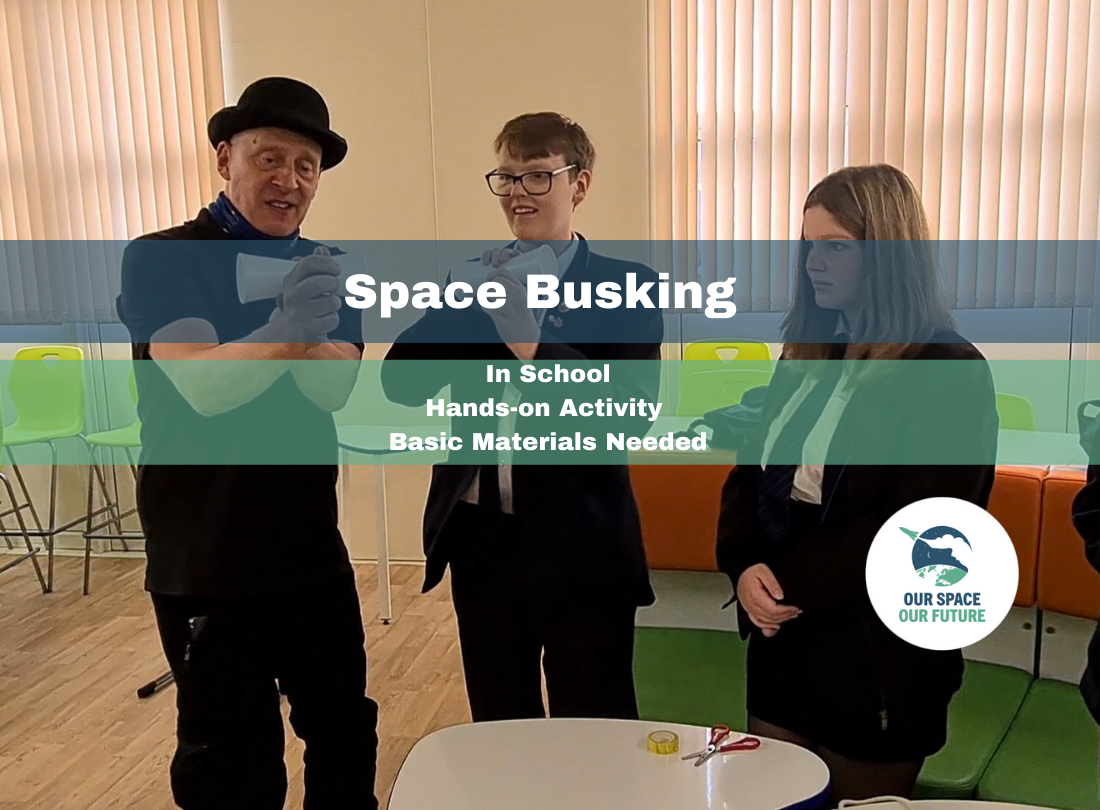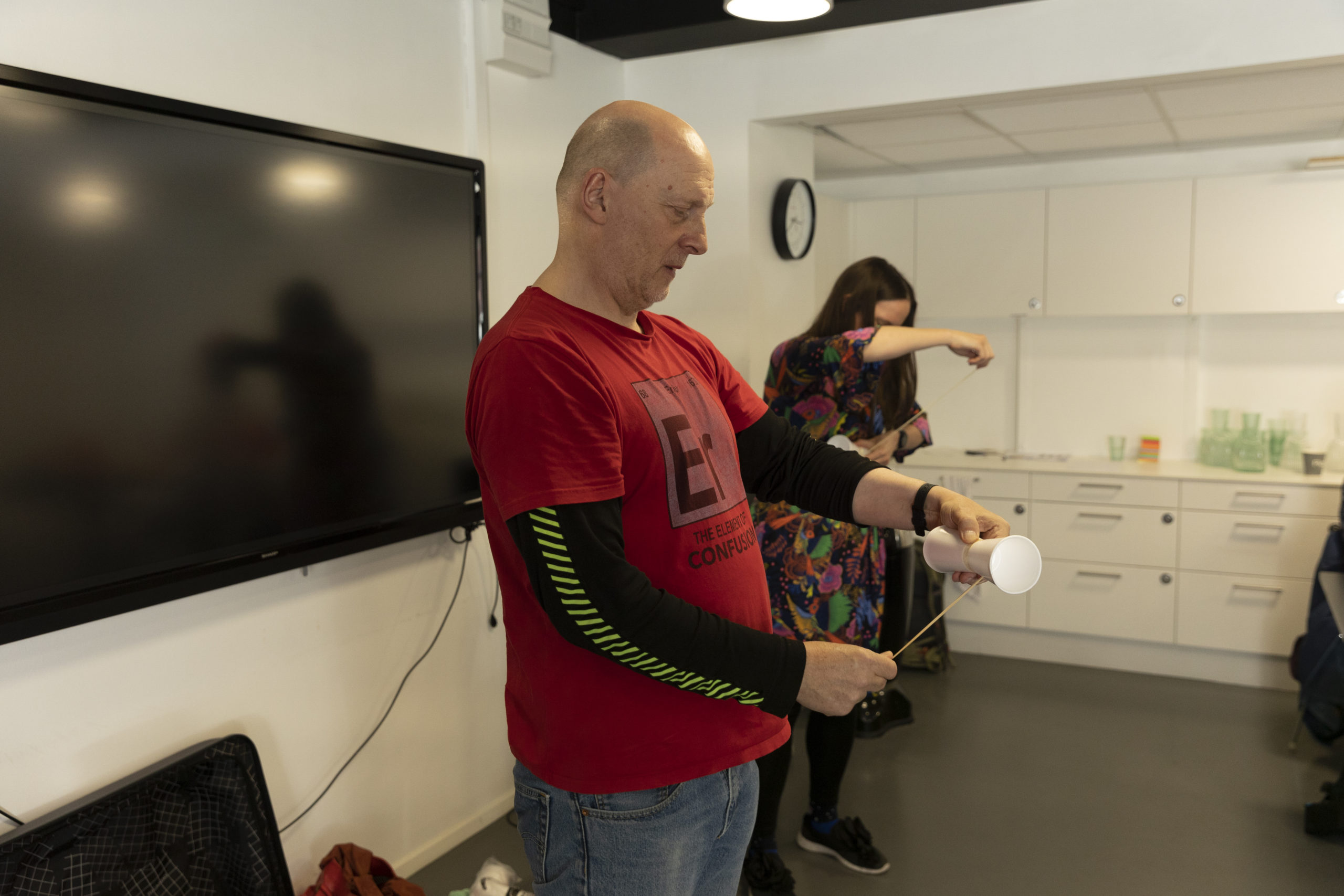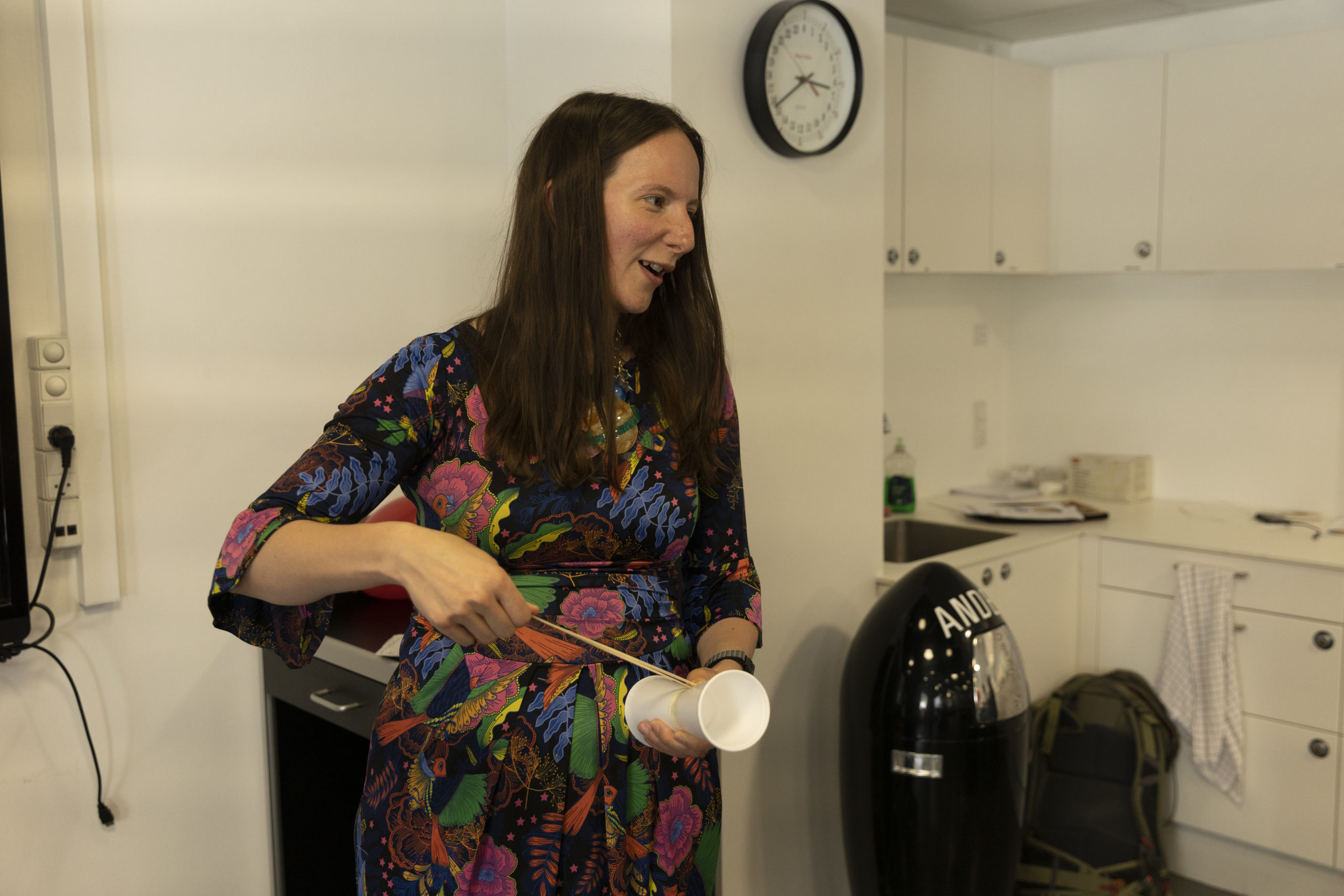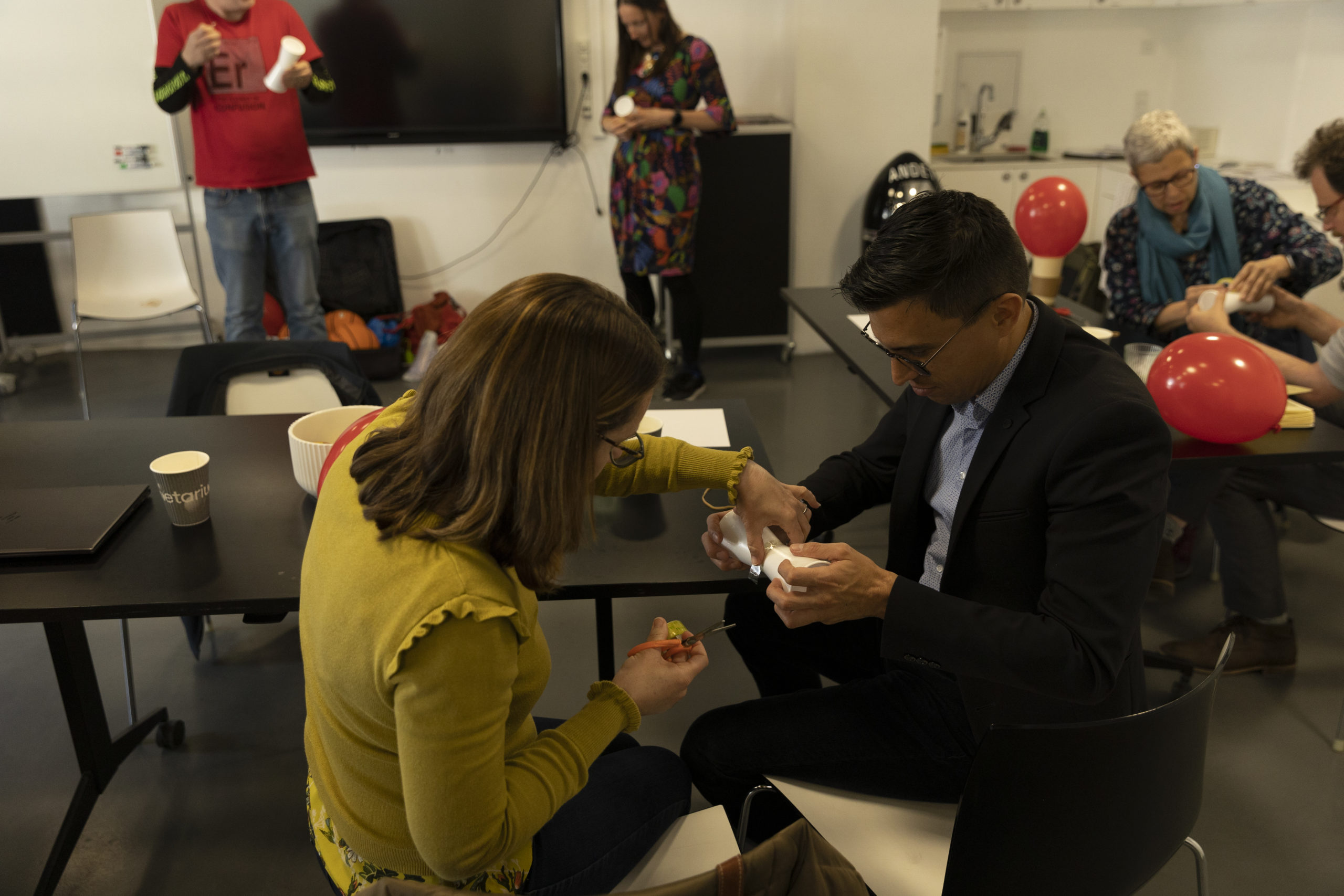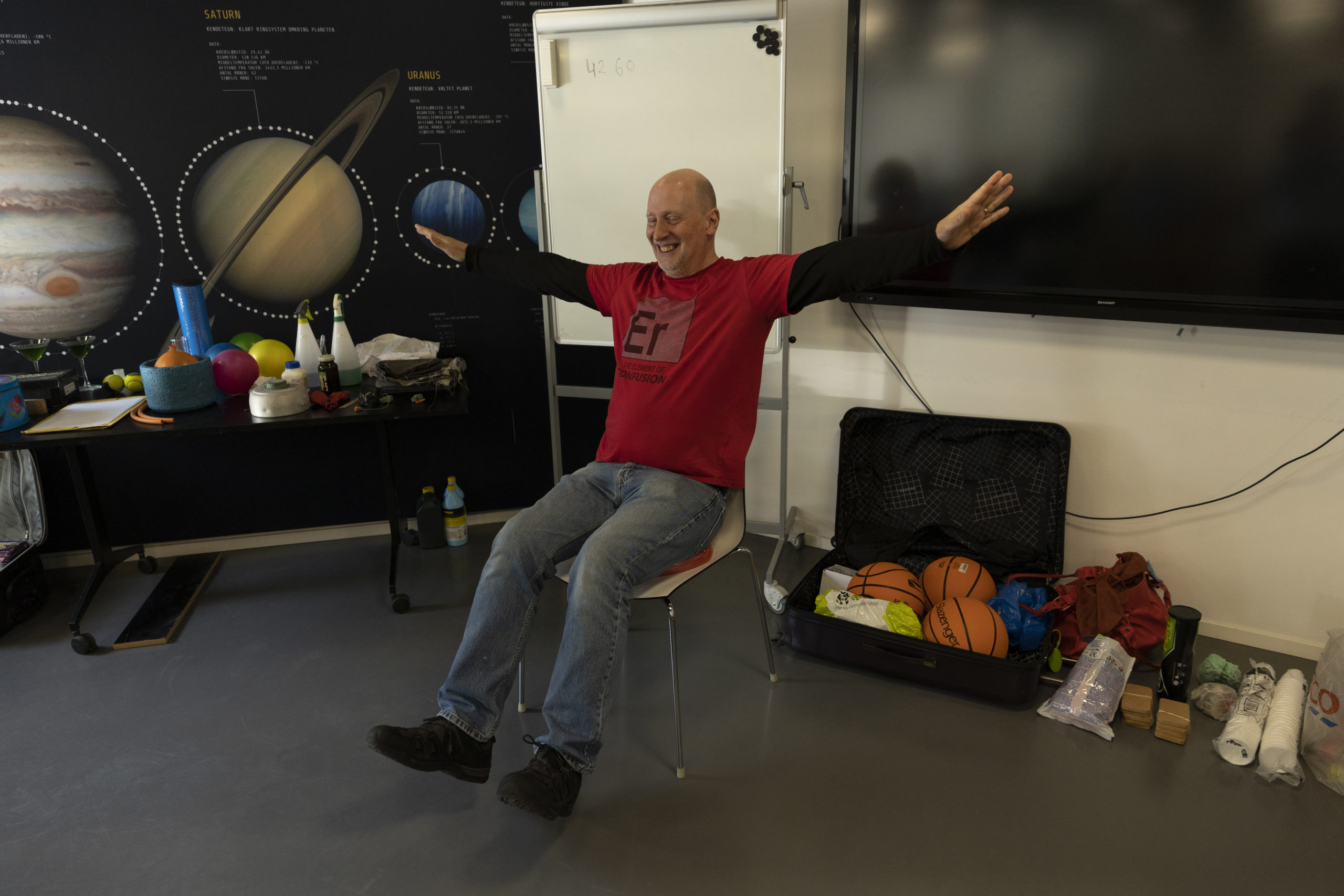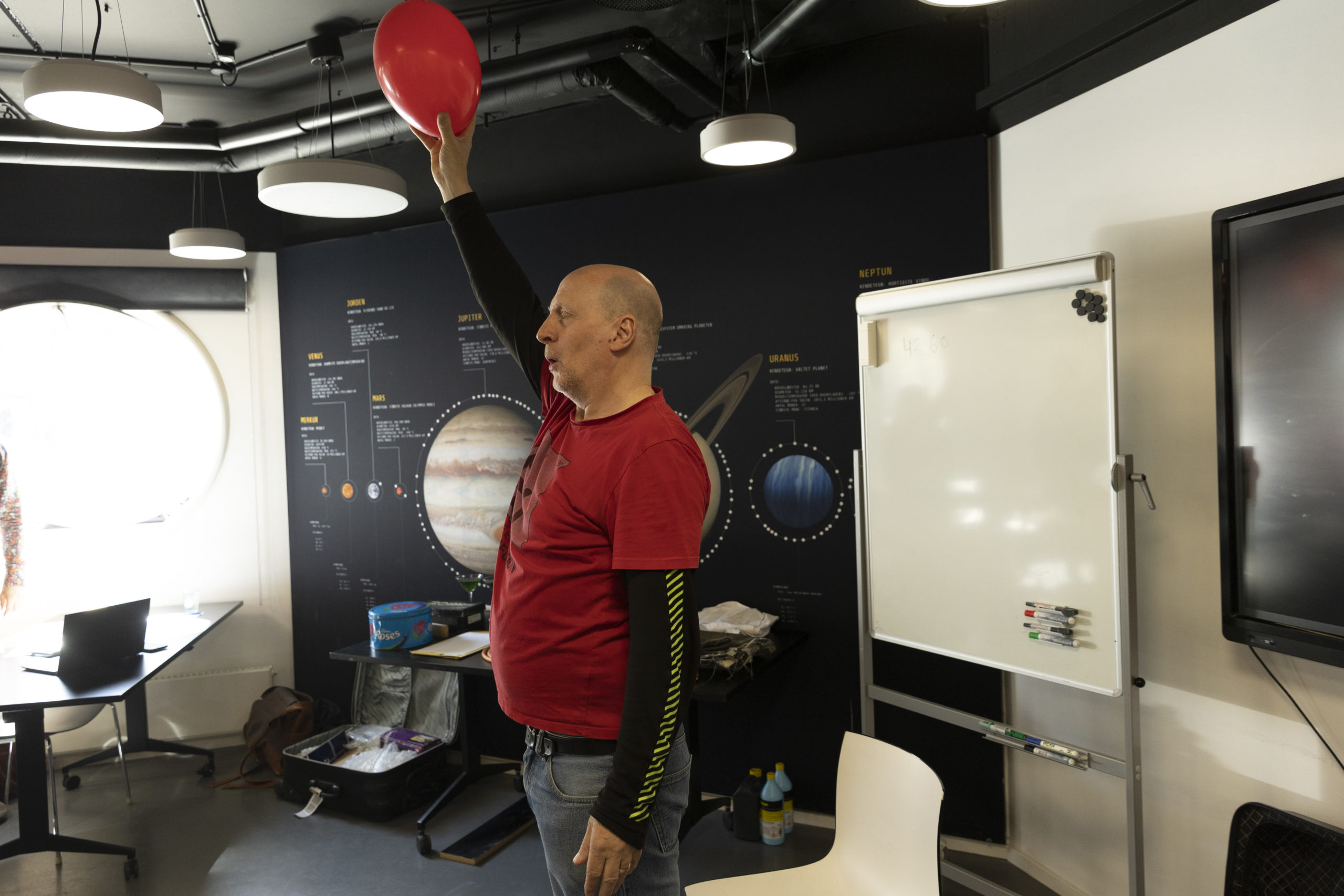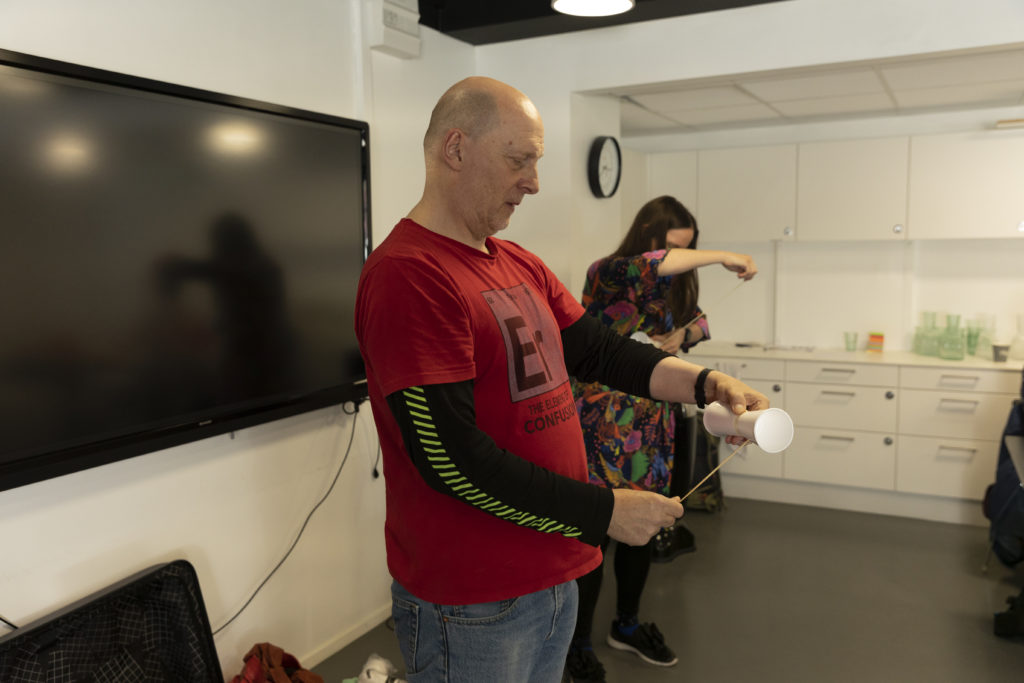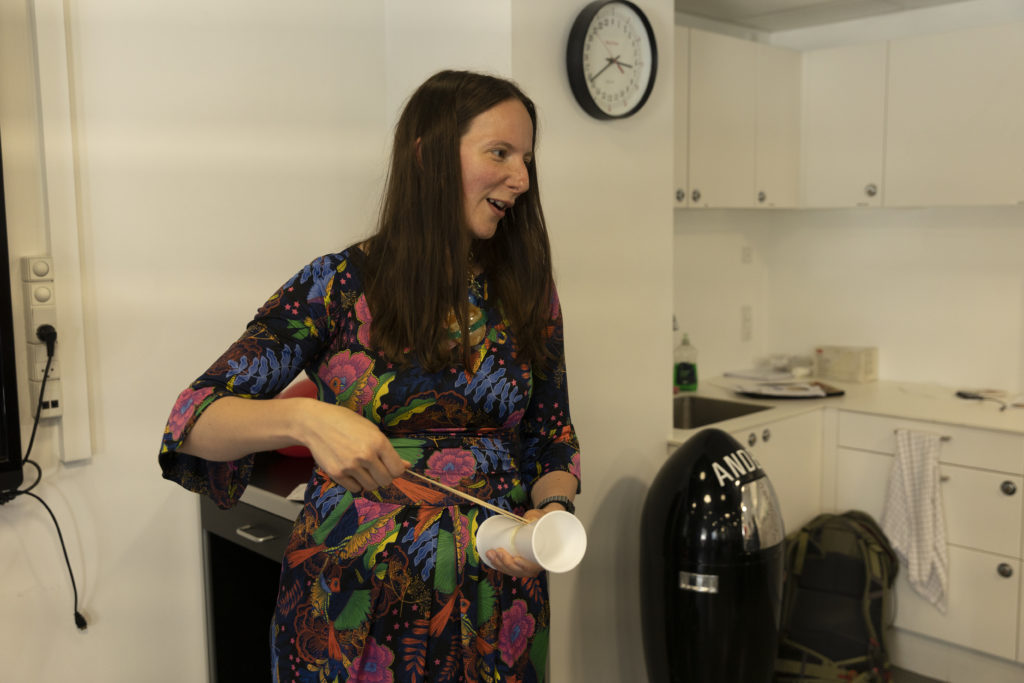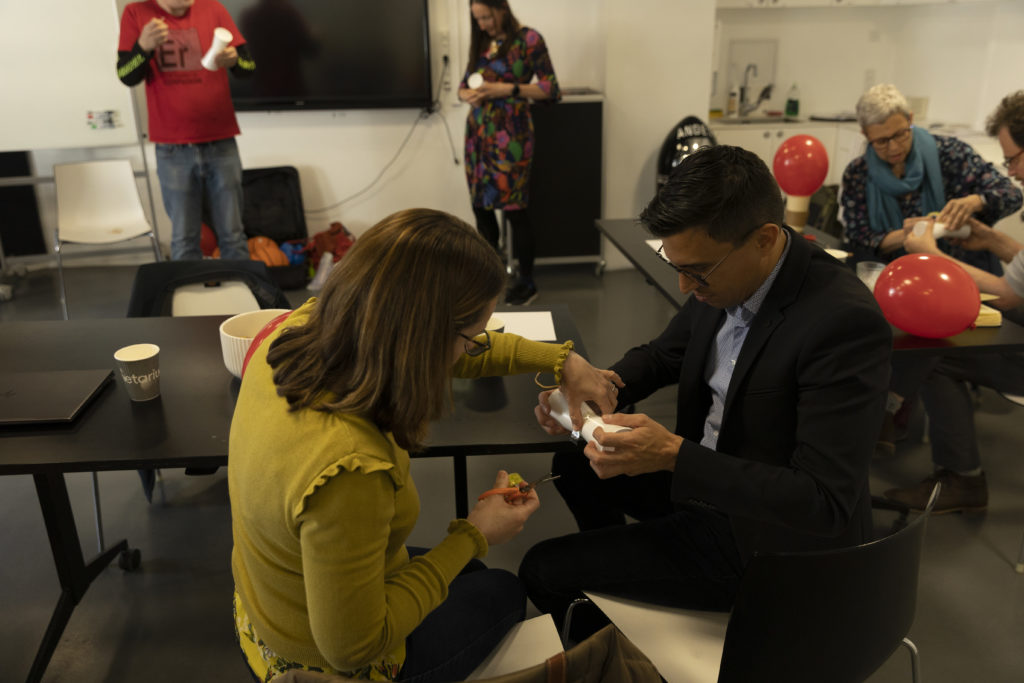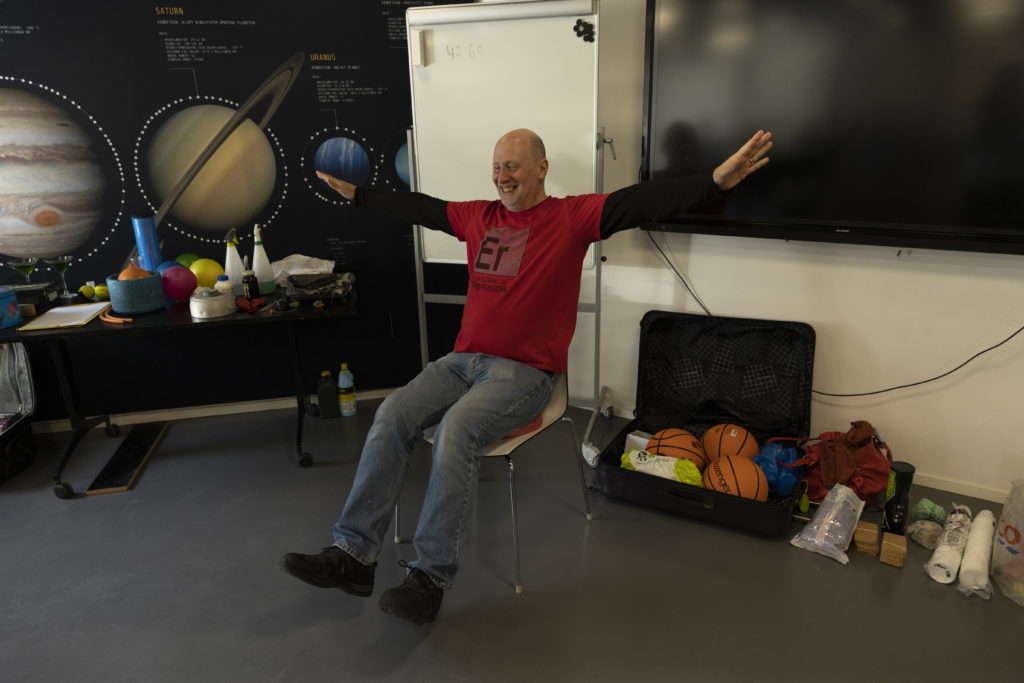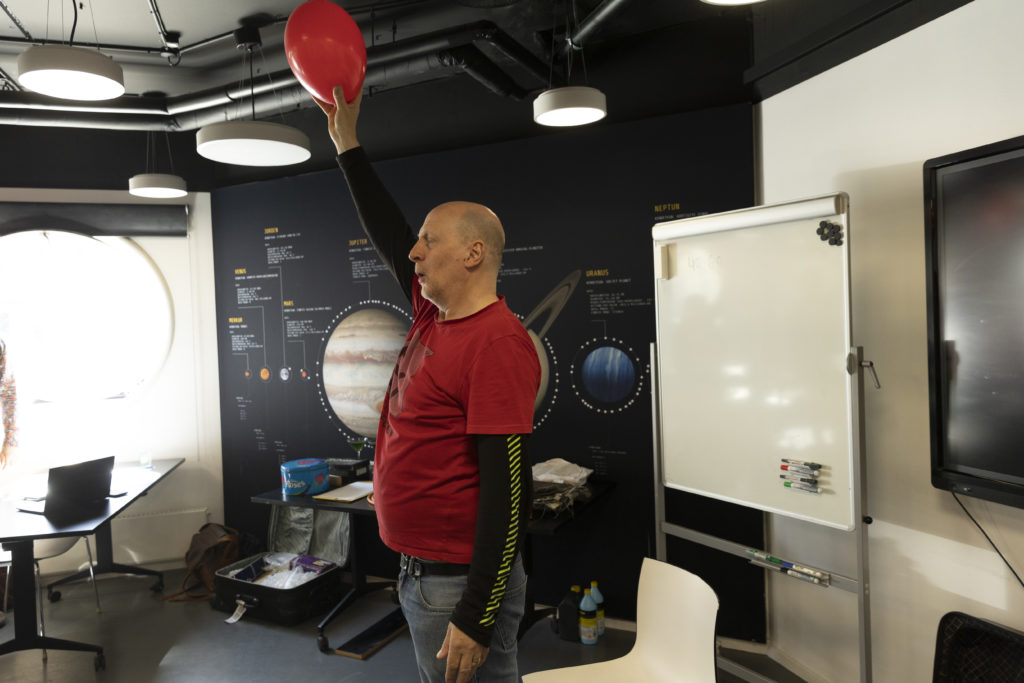Setting Details
Ideally a live face to face event
Pupils are informally seated around tables, with access to an open space nearby large enough for all participants to stand up and move around. Session leaders sit with the pupils, standing up for demonstration purposes when required.
Given the very hands-on nature of this session good to have two session leaders, as one would lead the session while the other would dedicate themselves to social media during the session.
Very useful to run the suggested warm-up activities early on in the session, as this helped to give participants a real handle on the participative nature of this session
Space busking aims to foster joy, participation and self-expression around space-related careers and science. It does this by utilizing and promoting the skills of street performers to attract hold and engage diverse audiences around space and STEM topics. Pupils become mini space STEM ambassadors to their communities performing in formal and informal circumstances
The space busking event would propagate itself into communities via school social media and direct action between pupils and their families and friends. Time served and deliberately “infectious” participative demonstrations were chosen so as to maximise the chance of pupils wanting to carry these mini-community performances forward.
Space busking sessions could be run by teachers, external staff, researchers and (with supervision) pupils. The aim is for these activities to propagate themselves beyond the Strick school environment, into playgrounds, homes, parties and diverse social settings.
Learning Objectives
Space busking aims to foster joy, participation and self-expression around space-related careers and science.
The space busking event would propagate itself into communities via school social media and direct action between pupils and their families and friends.
Space busking could be run by teachers, external staff, invited researchers and (with supervision) pupils.
- Space industry covers many different careers
- Anyone can have a space industry career
- Space industry benefits everyone
- STEM subjects are important and interesting
Materials needed
Scissors and sticky tape for each pair of participants
2 Styrofoam cups per pair of participants
1 long elastic band per pair of participants
2 round latex balloons per participant
1 fake mobile phone (suitably sized block of mdf) per pair of participants
1 honeybee toy or large image of a honeybee
1 small prize for eye contact competition winner
Script/programme of activity
Run Down-
1) Warm-up activities designed to help pupils share cool STEM and Space related activities with their families and friends.
a) Waggle exercise, thinking about enthusiasm, humour, dance and honeybee science
b) Sitting on an inflated balloon, thinking about jeopardy, audience participation, insolation in space and polar bears
2) Presentation technique activities, how can what we do make a difference in how people take up our ideas?
a) Smiling exercise (if you smile the world smiles back, mostly!) Whole group exercise.
b) Eye contact exercise (creating links with our audience) Whole group exercise
3) Busking demonstrations for pupils to practice.
a) Can we fly a satellite into space (flying cups demo)? Whole group exercise
b) The chain of cooperation in space (Zeeman rope handcuff demo) Whole group exercise
c) Material science in space (mobile phone inside a balloon demo) Whole group exercise
3) Conclusion, What we really hope you will do with these skills.
a) Tell your family and friends about all of this and help them to try the things you have just tried
b) Practice, practice, practice!
Warm-ups
Warm-up activities are designed to help pupils share cool STEM and Space related activities with their families and friends. The importance of such warmups cannot be overemphasised, with pupils being inducted into the “special world and skills” of space presenting, as a whole group trying out these gentle introductions to STEM presenting.
Waggle exercise, thinking about enthusiasm, humour, dance and honeybee science. The whole group (standing or seated) writes their first name in capital letters with their right index finger, then left index finger, then right big toe, then left big toe, then turn around and write with their bottom. Then the bee waggle dance story is explained to them and they are asked to reflect on how they smiled and laughed and moved and danced around a STEM topic and experienced it physically with their bodies as well as with their minds.
Sitting on an inflated balloon, thinking about jeopardy, audience participation, insolation in space and polar bears. All group members not allergic to latex inflate a round balloon and tie the balloon off with a knot (so often some pupils are good at tying off balloons and some are not, so they start helping each other to knot the balloon, so amazing to see this unrequested cooperation come to the fore in this form of activity).
The whole group stands up with their balloons, raise them above their heads and performs 3 slow pirouettes in time with the session leader.
The whole group then place their balloons on their chairs and gently sit on their balloons.
What has just happened? Non-popping balloons led to discussions around force distribution
How does your bottom feel? Warmth is at least partly generated by the insulation properties of the still air inside the balloon. A polar bear’s hollow fur acts very much like your balloon so as to keep it warm. Engineers in space are constantly trying to work out how to insulate space-related technology (such as lasers) from the extreme cold of space
What happened just now to keep and hold your attention? There was some uncertainty, some safe risk, you were unsure of what was about to happen, this held your curiosity and attention. This is what busking can do for our space messages.
Presentation techniques
Presentation technique activities, how can what we do make a difference in how people take up our ideas?
Smiling exercise (if you smile the world smiles back, mostly!) Whole group exercise.
Close your eyes and imagine covid has stopped you from seeing your best pals for ages ☹
But now you can see them again and you arrange to meet up at your favourite ice cream parlour 😊
So when you meet up you are smiling like crazy, notice how that smile changes your whole face and when your pals see it they start smiling too! Notice how when you speak that smile changes your voice and even the rest of your body language and notice how your pals react to this in similar ways.
Now open your eyes and give the person sitting next to you your best smile and remember if you smile the world often decides to smile back.
Eye contact exercise (creating links with our audience) Whole group exercise
All participants stand in a large circle shoulder to shoulder, they are then timed in 1mins intensive eye contact with at many participants as possible as they move randomly around.
This exercise is then repeated but as a competition, with participants keeping count of how many eye contact experiences they manage to collect. The winner gets a small prize.
Eye contact can really help us to engage with our audiences.
Busking demonstrations
Busking demonstrations for pupils to practice.
Can we fly a satellite into space (flying cups demo)? Whole group exercise.
Join two Styrofoam cups together with sticky tape so as to resemble an hourglass shape, now stretch an elastic band around the middle of this shape, hold onto one end of the elastic band and release the cups in the air so the elastic band makes them spin rapidly together. Session leader now helps the participants as they construct and practice launching their flying cups. Explain with regards to the force of lift. So can we fly space hardware into space using a lift? Conversations are encouraged around how we use rockets to get into space and how satellites can travel using the gravitational pull of other planets and how engineers down here on Earth work to make all of this happen.
The chain of cooperation in space (Zeeman rope handcuff demo) Whole group exercise
Zeeman rope handcuff (topological puzzle) demo is run with all participants in pairs. As participants solve the puzzle, they are asked to advise other pairs on how to solve the puzzle.
So to solve that puzzle what did you all have to do together? Yes cooperate, can you see how that activity can be used to focus the attention of people on cooperation (while laughing their heads off and having a great time. No one engineer, no one scientist, space lawyer or space chief sees a project all the way through to the end on their own. Project teams need to cooperate to get the best out of space.
Material science in space (mobile phone inside a balloon demo) Whole group exercise.
The session leader demonstrates using science to place a mobile phone inside a balloon. Participants who do not have a latex allergy now blow up a balloon and practice the demonstration they have just seen. Demo then explained with references to the elastic properties of latex and the use of our muscles to apply a force.
Why might novel materials be useful in space? Discussions around smaller and more eco-friendly satellites and rockets.
So we can use very simple demonstrations like this to get our audiences (laughing and joking) and thinking about the different properties of materials in connection with our use of space.
Conclusion
What we really hope you will do with these skills.
Tell your family and friends about all of this and help them to try the things you have just tried.
Practice, practice, practice!
Teacher/educator
Teachers can either act as session leaders, demonstrating these activities and getting the class to follow along. Alternatively, you can invite an expert or an external facilitator to run this session, and the teacher helps facilitate by encouraging pupils to ask questions and take part in the activities. Taking pictures and videos of those taking part would also be nice to document the event.
Guardian
If this is done as a community event, encourage the parents or guardians to take part in these activities, and encourage them to talk with the those they look after about the event afterwards.
Researcher/invited expert
It is possible to contact local experts and researchers in the fields of space and science to talk through these activities and explain the science behind how these demonstrations work. These guests can also answer questions about their research or area of work with the audience and act as role models.
Key elements for inclusivenes
The nature of science busking is to get the audience involved and take an active role in their learning, and by offering hands-on experience it can accommodate students with different learning styles.
Some considerations may need to be made for students with special educational needs, but the tactile and hands-on nature also allows for students who are partially sighted to participate.
Websites
Further Science Busking resources can be found here.
Videos
Extra information
For any more information please contact info@sciencemadesimple.co.uk

